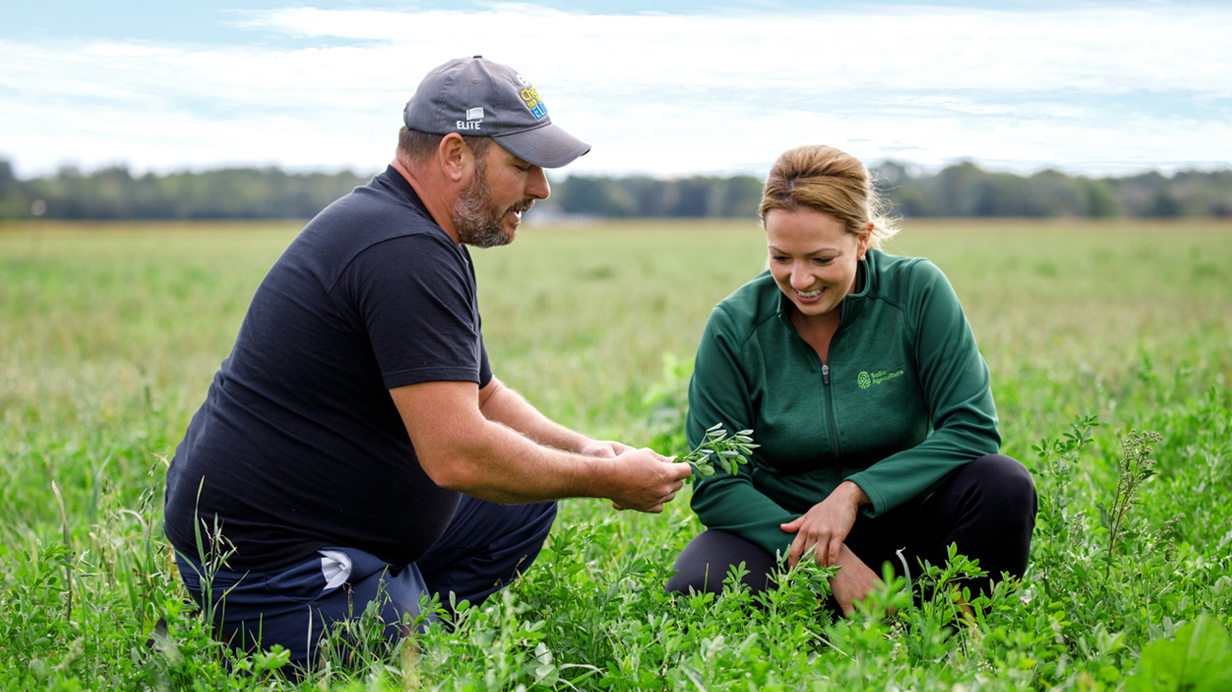How to select the right cover crops
Using cover crops is a key part of caring for two vital resources—the soil and the environment. Selecting the best cover crops and successfully integrating them into your rotation requires setting an objective and developing a sound plan.
Set an objective
Before selecting a cover crop or mix, it’s important to set an objective, as no single plant can do everything. Choosing which species to use will be much easier and more effective once you have established your priorities. If you want to be successful, you need to have a target in sight and not jump in blindly.
To set an objective, ask yourself what you want the cover crop to do for you. Here are some possible answers that may help:
Reduce erosion
Keeping the soil adequately covered at all times reduces wind and water erosion. Grasses, with their superficial fascicled root system (made up of many fine roots), can be particularly effective.Provide nitrogen
Pulses such as peas, clover and vetch can capture nitrogen from the air through their nodules. This nitrogen input can be significant and help fertilize the next crop.Capture residual nitrogen
Cover crops can capture residual nitrogen from manure, slurry and inorganic fertilizer applied during the season. Grasses and crucifers are efficient nitrogen scavengers that can help reduce losses through leaching.Increase biodiversity
Growing green manure from families other than those grown on the farm increases biodiversity, one plot at a time. So it’s worth looking at certain crops such as:
Flax
Phacelia
Buckwheat
Sunflower
Use integrated pest management
Covering the soil with a cover crop at the end of the season, rather than leaving it bare, reduces the number of weed seeds that return to the soil. Crucifers can be used for biofumigation, and certain radishes (such as the Nemacontrole oilseed radish) and millets can be used for nematode control.Improve soil structure by keeping the soil alive 12 months a year
The presence of living roots throughout the season promotes aggregation and helps improve soil structure. Some cover crops, such as radishes, can help with soil decompaction as their large roots allow more water to infiltrate deeper and penetrate the soil more effectively.Add organic matter
If there is little crop residue left in the field and organic fertilizer is not readily available, green manure can help maintain good levels of organic matter. The use of perennial plants is recommended, but the incorporation of warm-weather grasses can also be beneficial.
Working on these aspects of soil health will increase the soil’s resilience and ability to cope with factors beyond your control, such as drought and excess water. A healthy soil and the use of green manure will also allow you to increase yields and modify fertilization methods.
Select your cover crop
Cover crops can be sown before a main crop, as an intercrop or after the main crop has been harvested. In some cases, the cover crop is the main crop for the whole season. The options available depend on the time of sowing.
Intercrop Ribeye ryegrass (annual ryegrass selected for its well-developed root system). Ryegrass is a shade-tolerant cover crop that is a safe bet with corn.
Clover mix (a mix of perennial and annual clovers for intercropping with cereal). This mix is less aggressive than red clover, can be sown at the same time as cereal and provides a cover that lasts after harvest. This perennial mix should be well managed before the next crop is sown.
Balance, N Maker, Structure Builder and Multi mixes. These mixes are designed for summer sowings after harvest (cereal, vegetables) to provide a cover that lasts until winter. They are made up of plants with complementary aerial and root growth. They can also be sown with other species, such as oats and peas. These mixes are safe bets that can meet a range of soil health objectives.
A number of other options are also available.
Develop a plan
Whether you’re new to cover crops or have been growing them for a long time, make sure that you have a plan, if only to ensure that you have the seeds and equipment that you need for sowing. A number of cooperatives offer a custom cover crop sowing service.
Your plan should include:
The type of tillage
The time of sowing
Weed control methods and solutions
Fertilization methods
How and when to destroy the cover crop
Remember to consider your crop rotation plan to properly manage disease.
Keeping the soil covered is an important step in keeping it healthy.
Source: This article was originally published in French in the May–June 2021 issue of Coopérateur magazine.



